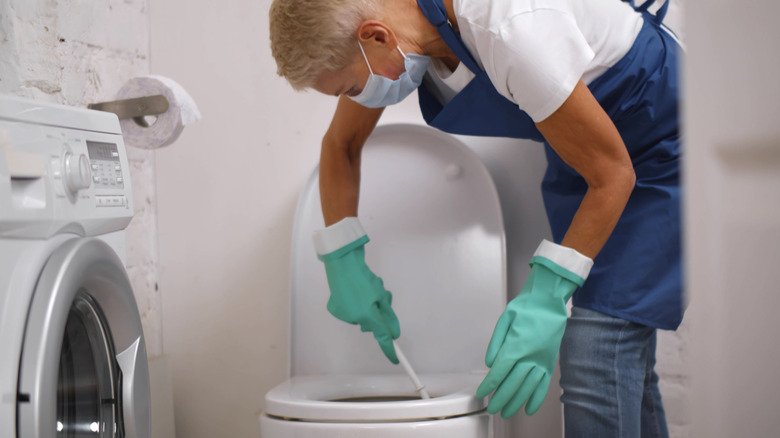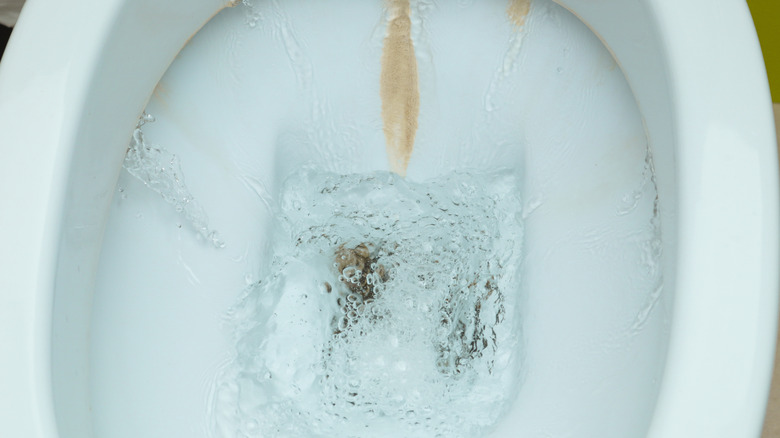Easily Banish Rust Stains From Your Toilets With One Affordable Solution
Household cleaning — some people love it, and some people loathe it. And while some chores like doing laundry or wiping down counters are not the worst, cleaning toilets can often feel like a truly unpleasant task. What makes this chore even more frustrating is when stubborn rust stains and hard water marks are present, leaving the bowl looking unsightly no matter how hard you scrub. Fortunately, there is one affordable and easy toilet cleaning hack that'll make your bathroom sparkle — a pumice stone.
A pumice stone is a natural, abrasive volcanic rock. This tool is gentle enough to avoid scratching porcelain, but tough enough to effectively scrub away mineral deposits and rust. Not only is this method extremely effective, but it's very affordable, with most options costing under $10. It is also a great chemical-free cleaning solution for those who want to reduce the amount of harsh cleaners in the home. Using a pumice stone to clean your toilet is very simple — just wet the pumice stone and the stained area and gently scrub until the stain is gone.
Scrub your stains away
There are many dangers of using toilet bowl cleaners, so save your money (and your lungs from chemicals) and ditch the harsh stuff. Using a pumice stone to clean your toilet is a simple task. First, you'll want to wet the pumice stone. This step is important, since a dry stone will actually scratch the porcelain bowl, leading to more damage and potentially making future stains harder to remove. You'll also need to have the rust stain in the toilet wet too, though in most cases, it probably already is.
Next, apply gentle to mild pressure to scrub the stain, using a circular motion. Let the stone do the work for you — you won't need the Hulk's strength for this task. As you clean, occasionally rinse the stain to check on the progress. As you work away the stain, you'll notice that the pumice stone will start to wear away. If you need to reshape the stone to better reach the stains, simply rub it against a rough surface, like a concrete walkway, to create a point or edge. Finally, flush the toilet to remove any leftover pumice residue and rust.
Since using a pumice stone goes beyond your traditional cleaning efforts, you should only use this method a few times a year — between four and six times a year is good. Any more than that and you risk potentially abrading the porcelain surface too much over time, which could lead to a duller finish or even micro-scratches that might allow new stains to adhere more easily. While you can use bleach in between pumice stone cleanings of your toilet, it's best to skip this if you do have rust stains, since this is the one stain bleach will actually make way worse.

